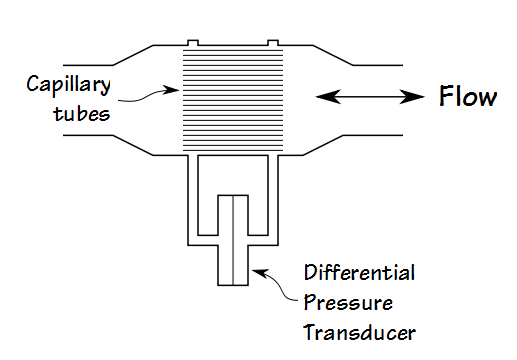The first reasonably accurate flow-measuring device was the Fleisch pneumotachograph which was developed in 1925. Originally the Fleisch pneumotach bounced a light beam off a mirror mounted on a diaphragm and from there onto photographic film, all of which made it difficult to use. World War II saw the development of sensitive pressure transducers, amplifiers and recorders and by 1950 the pneumotachograph went totally electronic and began to be commonly used in routine pulmonary research.
The first spirometers that used a flow sensor came onto the marketplace around 1970. Since that time, flow sensors of one kind or another have made steady inroads and now the majority of test systems use flow sensors and there are only a small handful of volume-displacement spirometer systems still being manufactured.
There are a variety of difficulties involved with measuring gas flow rates and this has driven the development of a number of different flow measurement techniques. As well as the pneumotachograph, there are now Pitot tube, hot wire, turbine and ultrasonic flow sensors. Some of these techniques are more linear than others but none of them are perfectly linear.
The pneumotachograph however, is inherently the most linear method for measuring gas flow rates and has been more completely characterized than all other techniques. For this reason it is probably used in pulmonary function equipment more frequently than any of the other type of flow sensor and is also far more likely to be used in research.
Gas flow through a pneumotach is measured from the difference in pressure across a resistance. There are a variety of ways of creating this resistance but there are only two methods that are relatively linear, the Fleisch and the screen (aka Lilly) pneumotach.
The resistance in the Fleisch pneumotach consists of a set of narrow capillary tubes, parallel to the direction of flow.

